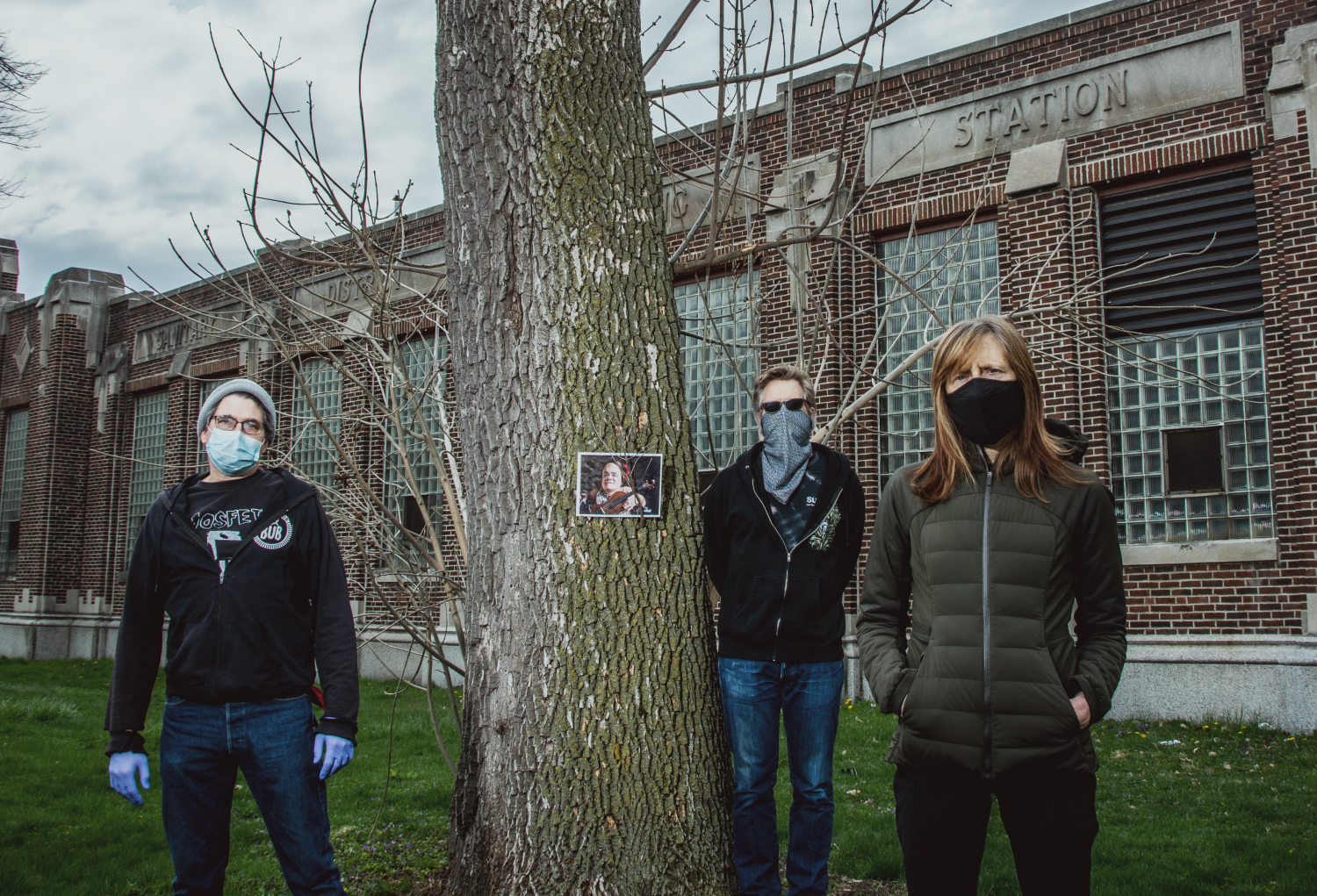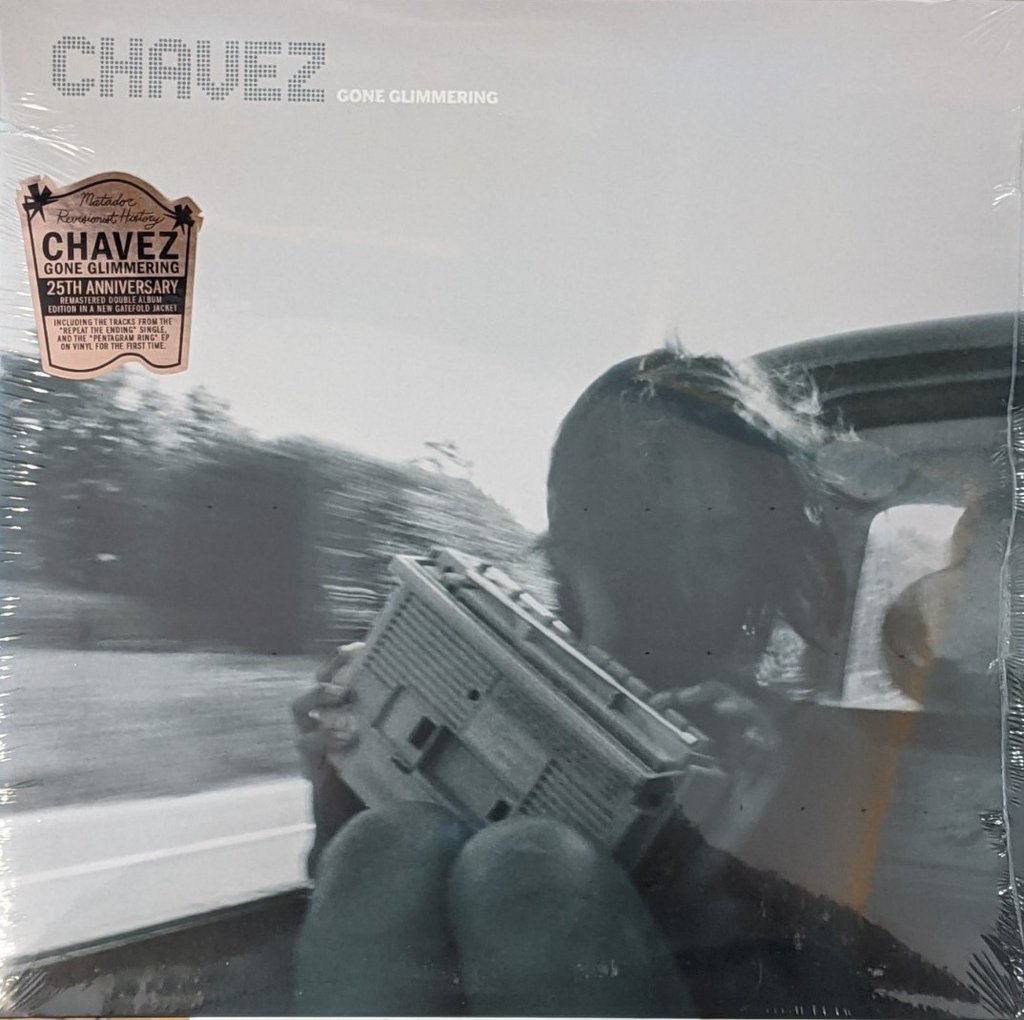Eight hours each way. That’s how long Tim Midyett and his friends drove to see Big Black play live in Seattle in 1987.
Archaeological artifacts place inhabitants in the Missoula, Montana area at the end of the last ice age, about 12,000 years ago. In the 18th and early 19th centuries, Native American tribes like the Salish, Kootenai, and Blackfeet used the land. Today the city, the state’s second-largest, is home to the University of Montana and about 75,000 people, little else. Midyett knew the story. So did Steve Albini.
“Steve – he was this mystic figure growing up; we’re from the same hometown,” Midyett told PopMatters. “Me and a bunch of my friends, we really got into his music, and we knew Steve grew up in the same town we were stuck in.”
“Nothing to do, sit around at home / Sit around at home, stare at the walls / Stare at each other and wait till we die / Stare at each other and wait till we die,” Albini characteristically barked on the Big Black song “Kerosene”. “Never anything to do in this town / Live here my whole life / Probably learn to die in this town / Live here my whole life.”
Five years after the Seattle show, in the early 1990s, Midyett and his band, Silkworm, recorded an EP with Albini, It was, appropriately, His Absence Is a Blessing. More records followed, and the two, eventually both Chicagoans, became friends.
For a man as verbose about underground music as Albini, the Shellac guitarist/vocalist, recording engineer, and underground icon doesn’t listen to music much during time away from Electrical Audio Studios. Why? To explain, he paraphrases the late recording engineer and teacher Malcolm Chisholm. “‘Do you know what a hooker doesn’t do on her night off?'” Albini dead-panned. “And that resonates with me.” But he doesn’t mince words to praise Midyett. “Have you heard Ambertron from Mint Mile, Tim’s ‘solo’ project?” he asks me. “I highly recommend it,” Albini said. “That’s probably the best realization of his authorial voice.”
Then comes Travis Stevens. A couple years ago, Stevens was making a horror film, The Girl on the Third Floor, and wanted Albini to score it. Albini was new to film scoring. So, he invited Alison Chesley, a cellist and frequent opener for Shellac, and Midyett, who plays bass and 12-string baritone guitar, to join him on the recording. NPR Tiny Desk star Gaelynn Lea contributes vocals to one track.
The movie, which is hauntingly silent at times and clattering at others, is available to stream online. The score gets released to the waiting public via Touch and Go Records on 12 June. “Tim and Alison were perfect for it,” Albini said. “I couldn’t have asked for better collaborators – they were game for everything and contributed a lot. It was a great experience.”
Midyett laughs when asked if he was intimidated to be playing alongside Albini finally. Two musicians who escaped Missoula, scoring a horror film set in the furthest reaches of Chicagoland. “It is weird playing with him because he has this weird rhythmic sense,” Midyett said. “He’ll play a riff, and there’s always is some odd hitch in it that makes it hard to do. It’s not being tricky – it’s just how stuff comes out.”
Steve Albini equals velocity. So say the liner notes to Shellac’s full-length debut, 1994’s At Action Park. And how can one argue? Turn to the firecracker-spark harmonics of “Kerosene”. Or the throat-shearing roar of “Song of the Minerals” and “Prayer to God”. Or the, yes, bombastic intro to Big Black’s live take on “Cables” off Pig Pile. Albini’s forge produces aural shrapnel, the sound of fingers grating nickel-wound guitar strings, and filtering the battery-acid rage into electricity.
“You try restraining yourself when you’ve got 30,000 watts of PA blowing your genius into a half-million cubic feet of ballroom,” Albini wrote of “Cables” in Pig Pile‘s liner notes. “Be thankful we didn’t break into ‘House of the Rising Sun’ or ‘Supernaut.'”
Earlier this spring, with COVID-19 in the air, Albini didn’t talk baseball or Canada. And he admitted when asked, that he couldn’t recall anyone ever sampling his work in Big Black, Rapeman or Shellac. (Man or Astro-man? bravely sampled Rapeman’s “Superpussy”, a confrontational little Albini offering, on its Made From Technetium LP, I told him. He’s OK with that one.)
“People are looking for something that echoes an entire era or frame of mind,” said Albini, who instead offered Curtis Mayfield. “My bands are just not that popular. And my music is kind of ugly – and it doesn’t evoke those warm associations.”
Regardless of warmth, Albini boasts a base. Chesley, who performs under the nom-de-guerre Helen Money, said Shellac fans, some who follow Albini with religious fervor, are some of the best audiences for whom she’s performed. “They’re open-minded, they’re smart,” said Chesley, who’s toured with Albini an estimated seven times. “I think, in general, they like to hear music that’s not in the mainstream, more on the edges.”
+++
The lynchpin of The Girl on The Third Floor score is “Irish”, a bizarrely affecting tune and almost a kind of drone-prayer. It alone fills the second side of the first of the score’s two LPs. But do not read too much into the title or think back to Orson Welles’ mysterious “Black Irish” character. Albini said the time signature of the song in its early, pre-edited stages simply reminded him of Irish folk music. “It’s just called ‘Irish’ because it has a 6/8 feel,” he admitted. “The name has no meaning other than the cadence of it is in 6/8, and the title just survived.”
The song, however, does more than just survive. Albini unfurls a creeping, off-kilter bit of post-rock shuffling on the track, which repeats the same riff, with varying degrees of intensity and amid interjections from Chesley and Midyett, for nearly 20 minutes. Its breath, though Albini cites Ireland, is more Old Testament histrionics, with each line extended, sometimes dragged like a body or a cigarette, beyond a casual breath-note.
And the spare singing from Lea and Albini, which seem to reference “Hannah” and “hair”? “The text is just gibberish,” Albini said. “It’s just words that sounded good on the notes.”
Or there’s the way Lea, who provides a rusty timbre and sometimes-harmony with her vocal tracks, describes it. “It’s like a mantra, almost – you can just hear it,” said Lea, who Low’s Alan Sparhawk introduced to Albini. “In such an abstract piece, you probably don’t want to give it too much meaning.”

The entire record has an otherworldly feel to it, and the trio even included some impromptu sight-readings they performed for various line cues – cut live, old-Hollywood style, in the studio with the film playing behind them.
The music, which Albini calls a set of “creepy instrumentals”, has no precedent in Albini’s storied catalog. As Albini goes, a Girl on The Third Floor song like “Irish” or “XVI Dry” makes the pressure-cooked nail explosions of “Jordan, Minnesota” look like the more limber, free-form tracks of The Futurist. And then some. “I was up for whatever [Albini] wanted to do,” Chesley told me. “I like his taste in music, so I know whatever he did would be super-cool. This score really was Steve, and I feel he really led the process.”
Corey Rusk, who has headed Touch and Go Records for a generation, doesn’t exactly know how to answer questions writers pose him about The Girl on the Third Floor score. “Steve called and said they were working on it and asked if I would want to release it,” Rusk told PopMatters recently. “I loved the idea of Steve and Tim working together. Given my 35-year history with Steve, it goes without saying that his music pretty much always resonates with me. I’ve been friends with Tim for over 20 years from being a fan of and working with Silkworm. Tim’s work in Silkworm and Bottomless Pit has always been very special to me. I didn’t really know Alison, but I’ve always been a sucker for a good cello. How could the film score not be great?”
+++
Albini is a shepherd who butchers sacred cows. Yes, yes, there was the hub-bub over Nirvana’s In Utero, back when it was blasphemous to suggest an artist helm the engineering of a major-label record, the follow-up to something multiple-times platinum, no less. There’s his dismissive take on many forms of jazz. Those deep-diving the Internet will find interviews where he is less than subtle about his disdain for the political status quo, all the way back to Reagan’s Morning in America. And, yes, there was his more recent feud with New York avant-jazz guitarist Marc Ribot over copyright laws and enforcement.
Beyond any of that, who could forget the images he elicited when comparing signing to a major label to swimming in feces? (“I imagine a trench, about four feet wide and five feet deep, maybe sixty yards long, filled with runny, decaying shit,” he mused. The piece is still a work of genius 20-some years later.)
In the August 1986 issue of SPIN, he took another leap, a kind of ugly one, though. He remarked he wanted to call Big Black’s second EP, Hey, N***er. The cover art? A repulsive, obese man slurring the title. Albini later told writer Michael Azerrad, for his exhaustive indie tome Our Band Could Be Your Life, that it was intended to be an anti-racist statement. “The idea being,” Albini told Azerrad, “that an offensive term used by an offensive person is only offensive if you allow that person’s commentary to have some weight or value.”
Albini, though, has become more recently apologetic, a stance he doesn’t seem to take often publicly when talking about the uproar over the comment. “I was wrong about that — there’s a value for criticism that’s enlightened,” he said.
Years later, he recorded “My Black Ass”, a more nuanced – and, though less provocative, no less evocative – take on racism. “Satchel Paige / It’s a Gary Cooper story / And it shines like Sammy’s knees,” he croons on the song, which opened Shellac’s full-length debut. “The perspective [on ‘My Black Ass’] was probably the same – it’s an anti-racist message that, in its way, wanted people to come to grips with casual racism,” Albini said. “I would agree it’s less blunt, less corrosive when I came to use a more nuanced story, rather than an epithet.”
+++
In few regards is Albini a novice or wet behind the ears. One of those areas is film. Albini’s signature can be gnarled and acidic, often favoring knocking the wind out of listeners to stretching a song’s scope across cinematic terra firma. (He is not a man, though, who doesn’t appreciate a process. On the contrary, the former Lucky Strikes smoker said he sometimes preferred hand-rolling cigarettes to smoking them.)
There are wonders to the Girl on the Third Floor score beyond precision and fidelity, though, those two Albini staples. Albini, a noted poker champion, might tip his hand a bit when talking about Metallic Knockout, a bootleg he owns of the Stooges playing live in Detroit back in the group’s early days. The band was “a complete shambles” that night, and Iggy Pop practically was firing people from the stage. The material, though, still bore, for Albini at least, an incandescent glow. “Everything about that gig was a fucking disaster, and everything about that record is engaging,” Albini said.
So, with that in mind, is the new record, a sort of enticing aperitif as Albini fans clamor for the follow-up to Shellac’s Dude Incredible, sounds consciously constructed not to sound as you’d expect it to sound? “The keys of all the songs were turned down pretty significantly,” Albini said, “the idea being just by choice of instruments, it wouldn’t be reminiscent of anything else.”
Much the same could be said for Albini’s public persona, which, he admits, he does little to stage-manage. As the fella said, “Fuck ’em if they can’t take a joke.”
“I don’t have a perspective on what should and shouldn’t know about me,” said Albini, earlier this spring. “It’s not my job to straighten people out. It’s none of my business what other people think of me.” – Justin Vellucci, PopMatters, June 10, 2020
-30-




